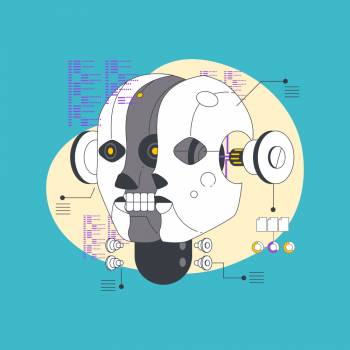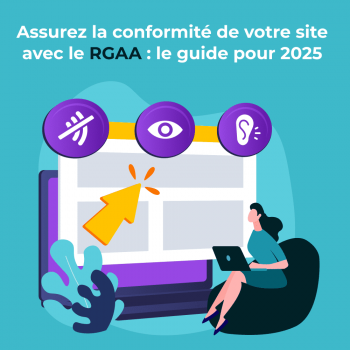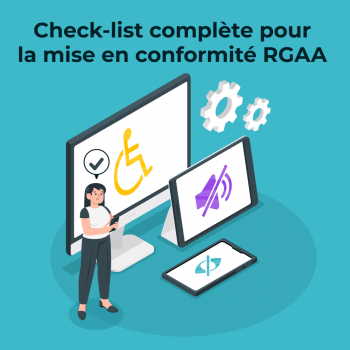The advent of artificial intelligence (AI) has profoundly transformed the professional landscape, raising concerns about a possible substitution of man by machine. Visions of an invasion of robots and domineering cyborgs populate our collective imagination. Yet, far from these apocalyptic scenarios, AI presents itself as a valuable ally. Its aim is not to replace humans, but rather to enhance their abilities and free them from repetitive chores.
Imagine a world where tedious, time-consuming tasks no longer monopolize your time (this should particularly appeal to office solution aficionados, and even to others, as office solutions could become more attractive). In this world, you could devote yourself entirely to high value-added missions, giving free rein to your creativity and emotional intelligence. That's the promise of collaboration between man and machine.
But how do we collaborate effectively with AI while retaining our humanity?
This is the central question we'll explore in this article.
Let's look together with some tips and examples at how :
- Spot the tasks where AI excels:
- Identify repetitive, data-driven tasks where AI can add value.
- Look for areas where AI can quickly process large amounts of information and detect complex patterns.
- Establish a relationship of trust with AI:
- Get involved in the AI learning process by providing quality data and feedback on its performance.
- Understand AI's limits and capabilities to avoid frustrations and misunderstandings.
- Create perfect harmony between man and machine:
- Develop a mutual understanding of each other's strengths and weaknesses.
- Integrate AI seamlessly into your workflow to maximize collective efficiency.
- Master AI tools and develop your skills:
- Train regularly to stay up to date with technological advances and best practices.
- Experiment with different tools and techniques to discover new ways of using AI in your work.
- Keep control of technology and use it responsibly:
- Be aware of the ethical implications of using AI and make informed decisions.
- Be sure to protect sensitive data and respect individual privacy in all your interactions with AI.
AI is not a threat to humanity, but rather an opportunity to amplify it. By working intelligently with it, we can achieve remarkable things and build a better future for all.
So, where do you stand in your collaboration with machines?
Let's embark on this journey towards a new era of work together!
1 - AI: a collaboration, not a replacement for mankind
Artificial intelligence (AI) is revolutionizing the world of work, sometimes raising concerns about a possible replacement of man by machine (I know you may be thinking of the films mentioned in the introduction... We're not there yet!). But far from these dystopian scenarios, AI is proving to be an invaluable ally in enhancing our capabilities and freeing us from repetitive tasks. And in fact, companies have already been using it since 2018.
According to a study by PwC, 62% of large companies had already adopted AI by 2018. This figure continues to rise, testifying to the rapid adoption of the technology, which could, according to McKinsey, generate $15.7 trillion for the global economy by 2030.
2 - AI is an assistant, you remain in control!
But how do you work effectively with it while remaining human?
The first step is to identify the tasks where AI excels. These include analyzing massive data, automating repetitive processes and finding information in large volumes of data.
For your part, you can focus on higher value-added missions: unleashing your creativity, making complex decisions based on human experience, expressing your empathy and using your social intelligence for meaningful interactions with colleagues and customers. AI thus becomes your virtual assistant, saving you time and increasing efficiency.
However, it's essential to distinguish between automation and AI. Automation focuses on repeating tasks according to pre-established rules, while AI implies an ability to learn from data and adapt to new and unforeseen situations. Although these two concepts are complementary, it is crucial to understand their differences if you are to exploit them to the full in your day-to-day work.
Let's take a moment to make a distinction:
"Automation" involves replacing repetitive human tasks with machines or software. It has been around for centuries, and encompasses everything from the first automatic looms to modern assembly lines. Its main aim is to increase productivity and precision by reducing human error.
AI, on the other hand, is a branch of computer science that seeks to develop machines capable of human-like intelligence. These machines can learn, adapt and make decisions based on their environment. AI can enrich automation by making it more flexible and intelligent.
So why might this collaboration be more effective?
Because we're talking here about the concept of intelligent automation, which aims to increase efficiency while freeing up humans for other tasks.
Here are a few examples from different sectors:
- In Manufacturing: AI-assisted robots can adjust to production changes in real time, increasing process flexibility and responsiveness.
- Logistics: AI optimizes delivery routes and anticipates demand, reducing costs and delivery times.
- In Healthcare: AI systems analyze medical images and help doctors make diagnoses faster and with greater accuracy.
Here's an interesting source you might like: https: //anr.fr/Projet-ANR-20-THIA-0002
3 - A relationship of trust between you and AI ...
Working with AI requires trust. For this, it is crucial to understand its capabilities as well as its limits. The transparency of algorithms and the traceability of decisions made by AI are essential elements in establishing this relationship of trust.
Despite its power, AI is not without its faults. It can lack creativity, emotional intelligence and the ability to adapt to new situations. That's where humans come in, bringing their holistic vision, sensitivity and discernment (and yes, we have a little heart that beats, too!). So it's crucial to create optimum synergy between AI and humans.
To achieve this, it's important to :
- Train to collaborate more effectively.
- Master AI tools.
- Understand its fundamental principles.
Training courses and online resources can help you familiarize yourself with AI and develop the skills you need to interact with it productively.
4 - Humans in the driver's seat, AI in support of the common good
AI must never take precedence over humans. It is crucial to define ethical safeguards and ensure that AI is used responsibly. Humans must retain control of technology and ensure that it is aligned with ethical values and the interests of society as a whole.
This means it is essential to develop appropriate regulations and ethical standards to frame the use of AI in various fields, such as healthcare, finance, and education. In addition, it is necessary to invest in research into the social and ethical impacts of AI in order to better understand its implications and act accordingly.
Conclusion
In conclusion, AI is not a threat to humanity, but an opportunity to sublimate it when we work in intelligent collaboration with it. By keeping humans in the driver's seat and ensuring that AI serves the common good, we can harness its full potential to achieve great things and create a better future for all.
Embrace the future of human-machine collaboration.
AI is not a threat, but an ally.
By working intelligently with it, we can achieve immense progress and build a better future for all.
Here are some key points to remember:
- AI excels at automating repetitive, time-consuming tasks, enabling us to focus on higher value-added activities.
- The synergy between human and machine is crucial for optimal collaboration. Humans contribute their creativity, emotional intelligence and discernment, while AI offers its computing power and ability to analyze vast quantities of data.
- Trust is an essential pillar of effective collaboration. This implies transparency of algorithms, traceability of decisions made by AI, and a clear understanding of its capabilities and limitations.
- It is imperative that humans retain control of the technology and ensure its responsible and ethical use.
The future of work looks bright. By capitalizing on the strengths of AI and humans, we can shape a world where human-machine collaboration generates innovation, progress and prosperity for all. (Although, let's face it, this may also mean a transition of jobs to new functions, and who knows, maybe filing our taxes will be just a few clicks away, making significant savings!)
Some practical advice:
- Define clear and precise objectives for AI.
- Provide it with high-quality, reliable data.
- Supervise and control its operation.
- Interpret its results with discernment.
- Communicate openly and clearly with it.
If you'd like to know more about AI, please contact us!








